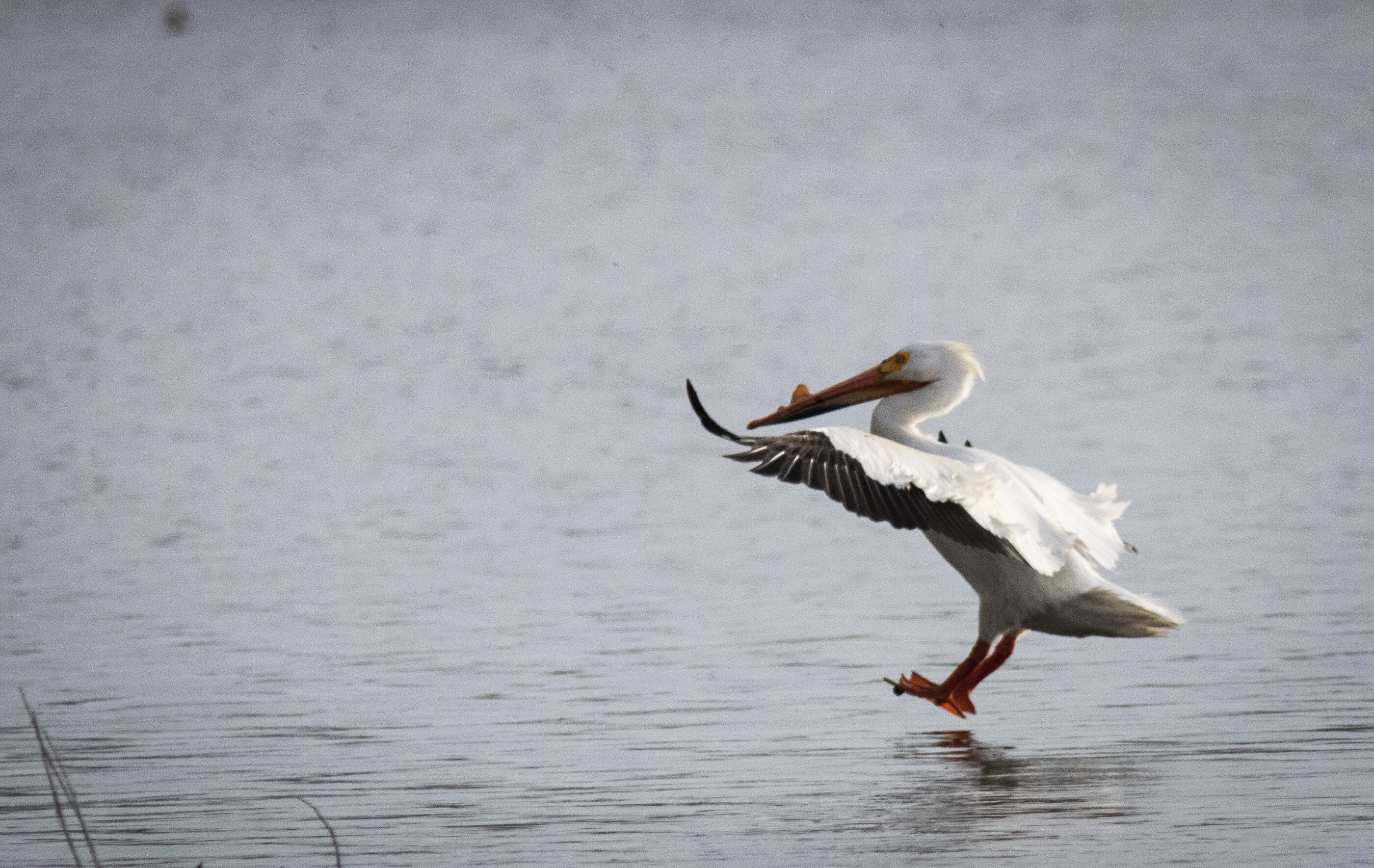
It’s a national park touchdown for this blue heron. 
Suzanne Downing is more excited about capturing this hungry muskrat than her own graduation!
06.11.2019
Edmonton, AB
I pulled up to Canada’s Elk Island National Park, about a thirty minute drive from Edmonton, Alberta. I’d finished my morning interviews and it was time to unwind. At the visitor centre, I read through the large pictorial timeline displayed on the wall.
I knew there were bison living in this northern prairies plateau ecosystem. They were featured on the park brochure. What I didn’t know was that in 1907 the Canadian government shipped hundreds of bison from the Pablo-Allard herd—one of the last and largest remaining plains bison herds of Montana. I was standing in the same park where the last of America’s bison took refuge more than one hundred years ago. It’s the same herd that’s now helping seed the American Prairie Reserve in eastern Montana. Very cool.
I made my way to Astotin Lake. It was the furthest point on the map where waterfowl viewing would still be plentiful. With my camera gear in tow, I hiked down a narrow wooden path on the edge of the lake. I saw a lot of beaver activity, noticing teeth marks etched at the base of small trees and piles of sticks and twigs. I saw pelicans, ducks, a blue heron and a tiny muskrat. I even saw a ruddy duck with a vibrant blue beak, a bird I’ve never seen in person.
I photographed for a while, watching a myriad of birds land and take off through my lens. Then, I listened to the serenity of bird songs. Glorious.
The plains bison were plentiful, all lying in the native grass, grazing slowly along the roadside and meandering behind trees—each one shedding its thick winter coat. It was quiet at the park.
I spent six hours driving around, hiking on trails and photographing wildlife. Before driving back, I returned to Astotin lake. I sat on a wooden platform outstretched over the water and watched the sun set. The day was a dream. As John Muir put it, “In every walk with nature, one receives far more than he seeks.”